“Our ways of playing exist too” – In conversation with Hmot
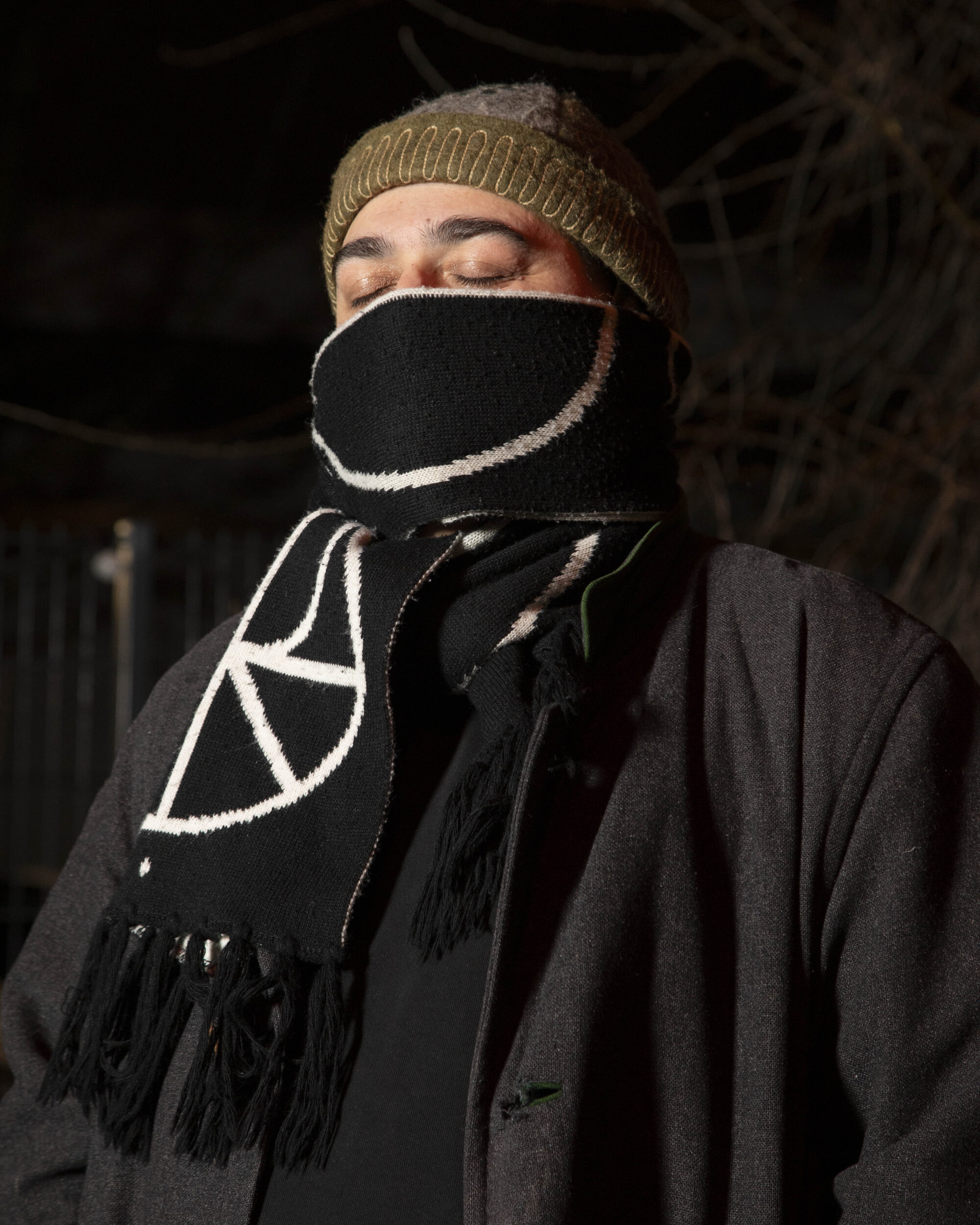
Stas Shärifullá, also known as HMOT, navigates the acoustic heritage of North Asia and the broader Turkic world through an innovative and grounded engagement with contemporary electronic and avant-garde music.
Shärifullá’s latest release, There Will Come Gentle Rain, puts surprising order to a pandemonium of precisely mastered influences. Synthesized phrases, digital sequences, and warm pads alternate with Bashqort melodies in the astringent voices of quray, daxophone and sh’ttar. Meanwhile, processed field recordings and luscious electronics dissolve into sweet abstraction, brush against moments of trance-like improvisation, and re-emerge as meticulously arranged compositions.
What follows is yet another introduction to HMOT’s sonic world, this time journeying through it in Shärifullá’s own voice. An inquiry about artistic process, monsters, politics, vulnerability, cultural entanglement, historical trauma and coming home.
” to reconnect with my roots: culture, language, extended family, all of it”
Tell us about your artistic trajectory. How does it intertwine with your personal trajectory? What was the process that led to There Will Come Gentle Rain (Warm Winters Ltd.)?
It feels like things have come full circle, back to where I started my solo project many years ago, but now with all the knowledge and experience gathered along the way. Back then, I was also focused on traditional music archetypes, specifically from North Asian and, more broadly, Turkic cultures. But my approach was very different, I’d say very extractive and straightforward, like, sampling throat singing and raw ethnographic recordings.
It started to feel wrong when I was invited to the North Caucasus to take part in a documentary about a local post-traditional label, Ored Recordings. Apparently, the production studio saw me as some kind of futuristic ethno-fusion/world music producer who instrumentalises cultures without any real commitment, so they wanted me to come and produce remixes or something similar. It felt so bad that I declined the invitation with what I now consider to be a bit too spicy of a comment on how wrong and exploitative their approach was. Later I learnt that guys from Ored weren’t particularly happy with the whole thing, so it proved to be a right call. But it also was a serious commitment, so I had to seek new directions for my music elsewhere.
For a few years, I got lost in the biographies of electronic music pioneers, trying to be someone I wasn’t, as most of those paths led to dead ends. It’s funny now—when I’m answering this question, I sound a bit like one of those pioneers myself, sort of a grumpy Pierre Schaeffer: blah blah, the way through is behind us. I guess the man was dealing with severe depression. Anyway, then migration happened, in its first stage, and shortly after, my father passed away. Both events caused a deep identity crisis and made me want to reconnect with my roots: culture, language, extended family, all of it. Life was changing too fast, and it felt like the world around me was crumbling, so I needed something solid, something real to hold on to.
I was very confused back then, so it took time. I started reading a lot, first filling gaps in my understanding of Bashqort history and politics, then moving on to more specific topics, like the genealogy of my ırıw—clan, or tribe. Eventually, I got involved in grassroots projects, where I met incredible people from both the diaspora and the republic—artists, activists, journalists, curators, and others, many of whom became close friends and have been very supportive ever since. All of this helped me reclaim a sense of self, but also brought so many questions. And since music has always been my personal diary, these questions began showing up in my work, quite naturally. In a way, it feels like coming home, now much more aware of what makes you who you are, and realizing that there’s so much beauty in what I once felt ashamed of, or in what had once seemed not “progressive” enough.
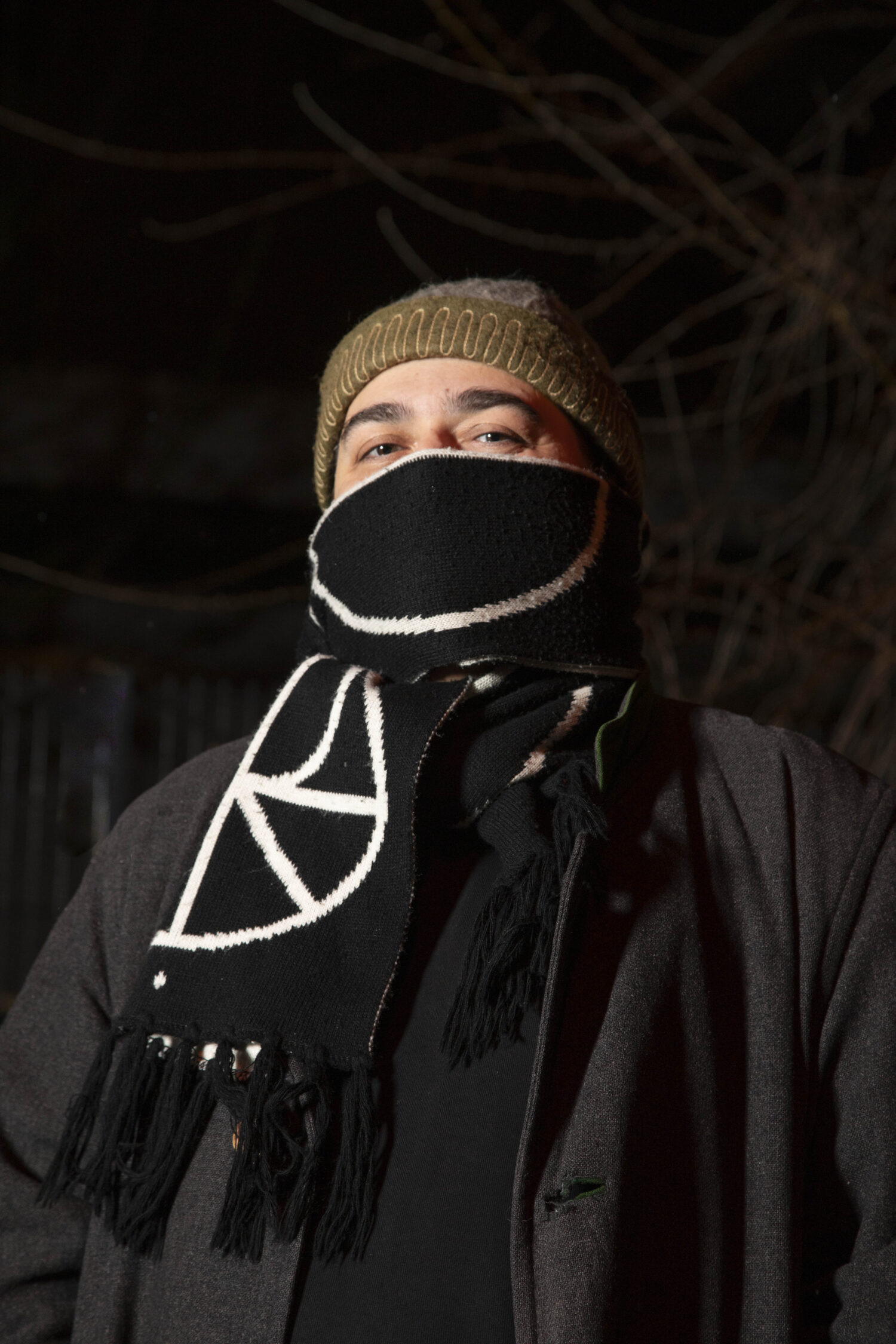
Your Bashqort roots seem to be a strong catalyst that grants material for your musical process, as well as your reflections on music as a means of resistance, imagination, and memory. Could you introduce this topic to our readers and share how you engage with it?
That is true, but focusing only on my Bashqort heritage would feel unfair, as I spent most of my life in East Siberia—over thirty years in the Krasnoyarsk region, where I was born and raised. It’s a very special place, a complicated one, with its heavy past and uncertain future. But my roots belong there too, and I don’t want to turn away from that.
I am saying this now not just because it is important to face that complexity, but also because this in-between state, being between two very different worlds—culturally, historically, linguistically—is something I’ve come to cherish deeply. Many of my friends with a similar background see it as a defect. I used to think that way too. But now it feels more like a superpower, or at least a way to understand history and politics from different angles and to go deeper into how these intersections shape us.
And there are just so many of these intersections. For example, the original settlement that eventually became my hometown in the Soviet era grew around a Norwegian-built lumber mill in the early twentieth century. It was part of the Siberian Steamship Company, a manufacturing and trading enterprise connected to both the Russian and British empires, at the crossroads of their colonial ambitions. Much of the infrastructure was built by prisoners and exiles, while the Indigenous peoples of these lands were either forced to move further north centuries ago or were assimilated—or worse. We don’t even know exactly how many people got caught between two empires and disappeared without a trace. This is something you never learn in school. At best, you get a romanticized version, with people like Fridtjof Nansen portrayed as brave heroes who “discovered” and “developed” a so-called brutal wilderness. I was reading his diaries recently, filled with detailed descriptions of his unhealthy attraction to what he calls “primitive peoples,” and it’s not easy reading, to say the least. Speaking of resistance and memory, stories like this are also powerful catalysts. And I have this perspective because I learned Bashqort history, where similar methods and narratives were used to justify or even romanticize genocide. If you read Ilyás, a short story by Leo Tolstoy—not only a writer but also a colonial landlord—you’ll see what I mean.
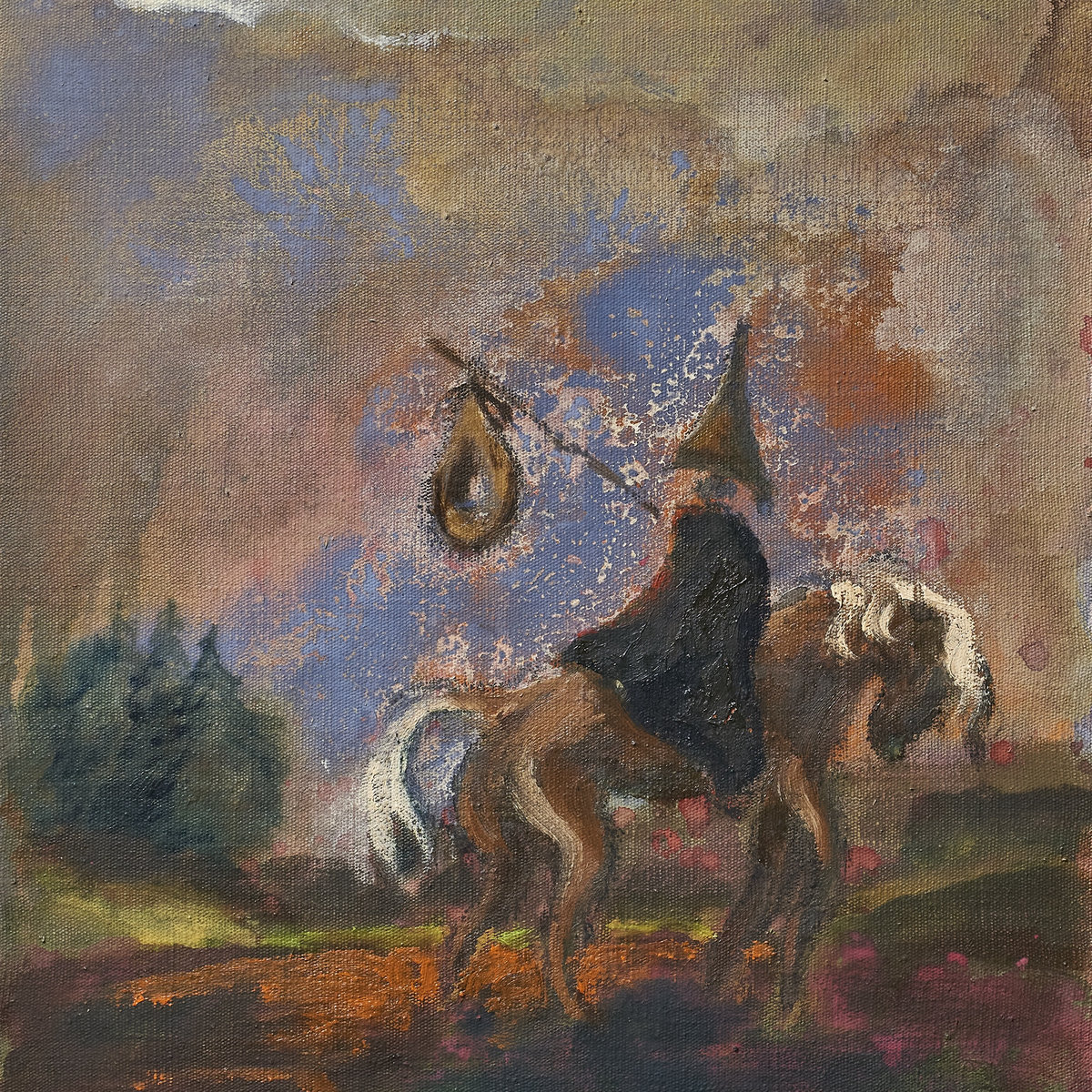
“homecoming becomes a process, not a destination”
Can you tell us more about any stories, characters, situations, or processes that are present in the songs on this album?
Thank you for mentioning characters! One of them appears on the album cover, in a painting by Štěpán Brož. There was this idea of homecoming I mentioned earlier, and I think Štěpán’s artwork captures it beautifully, focusing on the road and the traveler—so homecoming becomes a process, not a destination. Much like how it’s traditionally seen in nomadic cultures, where home isn’t a fixed place but something that moves and transforms.
I was also thinking about monsters, but maybe in a weird way. The idea came from this quote by Gramsci, which everyone started to throw around in the last couple of years: the old world is dying, the new one cannot be born yet, and all that. There are two versions of the ending, with the most popular being “now it’s the time of monsters,” and I’ve always thought about how people misinterpret the word “monster” itself. It comes from the Latin verb moneō—to advise, warn, or even foretell—so monsters are really here to alert us about what’s coming, even if facing them is scary or sometimes painful. Like, they’re here for a reason, but we ignore that. It felt unfair to the monsters, so I filled the album with them. Mostly shaitans, demons: fire demons, yens or djinns, those who visit the guilty ones in their dreams, albastı, then sand demons, and so on. And, of course, those who can speak to them—like Sainkho Namtchylak, who is clearly a shaitan küräzä, one who can see the demons, similar to a healer or shaman. Everything else I’d rather leave open to interpretation.
What was the creative process behind the album—techniques, technologies, instruments, aesthetics, ideas?
I’m mainly working with what I now call, with a touch of irony, the “aural uncanny valley” effect: using physical modeling, convolution and formant synthesis, and other techniques to create sounds that feel almost natural, but are clearly not. This runs throughout the album—for example, the artificial bird sounds in the title track. It also works the other way around: resynthesising acoustic sounds and field recordings to make them feel machine-generated, or using hybrid instruments that imitate real life. Take the opening track, where Eldar Tagi plays his daxophone—to me, it sounds like one of those monsters we mentioned earlier.
As for ideas, again, they’re best left open to interpretation. I’m a huge gaming nerd, to the point where I sometimes spend more time learning about game design than actually playing. And there’s a narrative technique mastered by one of my favorite game designers Hidetaka Miyazaki, which I really wanted to try. It’s called environmental storytelling: very rich lore that’s never directly explained but uncovered by the player through interacting with the world itself—architecture, items, atmosphere, and countless small details. There are many haters, but I really love how it respects the player’s agency, unlike many modern games. So, the core idea was to try something similar, using sound design, track names and graphics as easter eggs. The most obvious example is the vinyl record labels, where I used my clan’s tamğa—a kind of seal or sigil. Of course, compared to Miyazaki, my work is extremely niche, so there’s no expectation of crazy multi-hour fan videos with deep lore breakdowns. But even if it’s just for me, I thought it was a cute touch.
What does composing look like for you?
I usually record short sessions of prepared improvisation, always centered around methods related to my heritage: specific modal systems, pentatonic scales, microtonal intervals, ornamentation, and more. Later, I edit these sessions just a little, using basic DAW functions. The only track on the album that breaks this rule is Qom, featuring Adela Mede, even though she originally recorded her vocals for a raw, improvised version of this song, which you can hear on my previous release. But her voice and lyrics simply deserved better, so I produced an entirely new arrangement for this track from scratch—the closest I can get to a pop song. I also wanted to work with clear quray tones, not just the noise textures or short melodic swirls I typically use, and without resynthesis or any heavy processing.
What happened between your last album and The Moon Turned Into The Sun? Could you also tell us more about The Moon Turned Into The Sun?
There was surprisingly positive feedback for this release, which made me more confident with new instruments and ideas. It’s basically a document of some of the first attempts to resynthesize quray, work with traditional melodies and techniques, and so on. And since it’s a live recording, the tape is pretty much a snapshot of me slowly and cautiously stepping onto a new path. I decided not to polish it, so it would stay rough but also very honest. The intention was to not be afraid of showing vulnerability—for example, the fact that I hadn’t mastered the new setup yet or that, back then, my quray skills were rather rudimentary.
“if my label asked me to slap a “decolonial” sticker on the next record, I’d politely decline”
Would you say your practice contributes to decolonizing sound? How do decolonial practice and listening practice intertwine?
They usually intertwine in grant applications. Not blaming anyone, of course, as nowadays we all share this silly habit of paying the rent. What I’m saying is that my audience is very limited, and my music is quite abstract. Also, much of it relies on a very specific aesthetic language that demands a certain level of expertise to fully engage with, and I usually perform it in spaces that are inaccessible to the general audience. It might work on a personal level, and of course, raising awareness is always important. But if we understand decolonization as all these social and political practices dismantling the ways colonial powers exercise sovereignty over certain geographies and the bodies inhabiting them, then my music has little to nothing to do with it. So, if my label asked me to slap a “decolonial” sticker on the next record cover to boost sales, I’d politely decline—because it would feel like a symbolic gesture that causes no actual harm to those who should be held accountable. And I really don’t want my practice to divert attention from real issues.
On the other hand, there is definitely some potential in academia, particularly in disciplines that study how colonial history has shaped structural inequality on an epistemic level: what counts as “knowledge” and how it is produced. Fields like media theory, with its focus on technologies, platform politics, labor structures, and the ways sound is recorded and archived. Or social anthropology, especially research centered on aural and auditory cultures and the role of sound in shaping identity. Still, this is quite abstract, and sometimes even more niche.
Could you share other references that inspire you in this intersection?
There are many projects I find inspiring, even though the people involved rarely, if ever, describe their work as decolonial. Perhaps that’s because many come from activist backgrounds and are deeply aware that using decolonization as a metaphor often reinforces the status quo. If I had to choose just one, let it be League of Tenders, whose recent sound-related projects have been outstanding.
Maybe artists working with collective memory and diaspora soundscapes should also be mentioned here. I often think of the colonialism feedback loop—how the face of the world as everyone once knew it has been reshaped in recent decades, due to migration and displacement, whether forced or voluntary. Sound plays a significant role in this. And there are so many amazing artists whose practices, to me, are inherently political, whether or not they intend them to be, or perhaps precisely because they don’t. Artists like Saadet Türköz, Ghédalia Tazartès, or again, Sainkho Namtchylak, to name just a few. Those who not only engage with existing traditions but also create new ones, shaped by their personal histories of migration, rejection, trauma, and above all, resilience and strength.
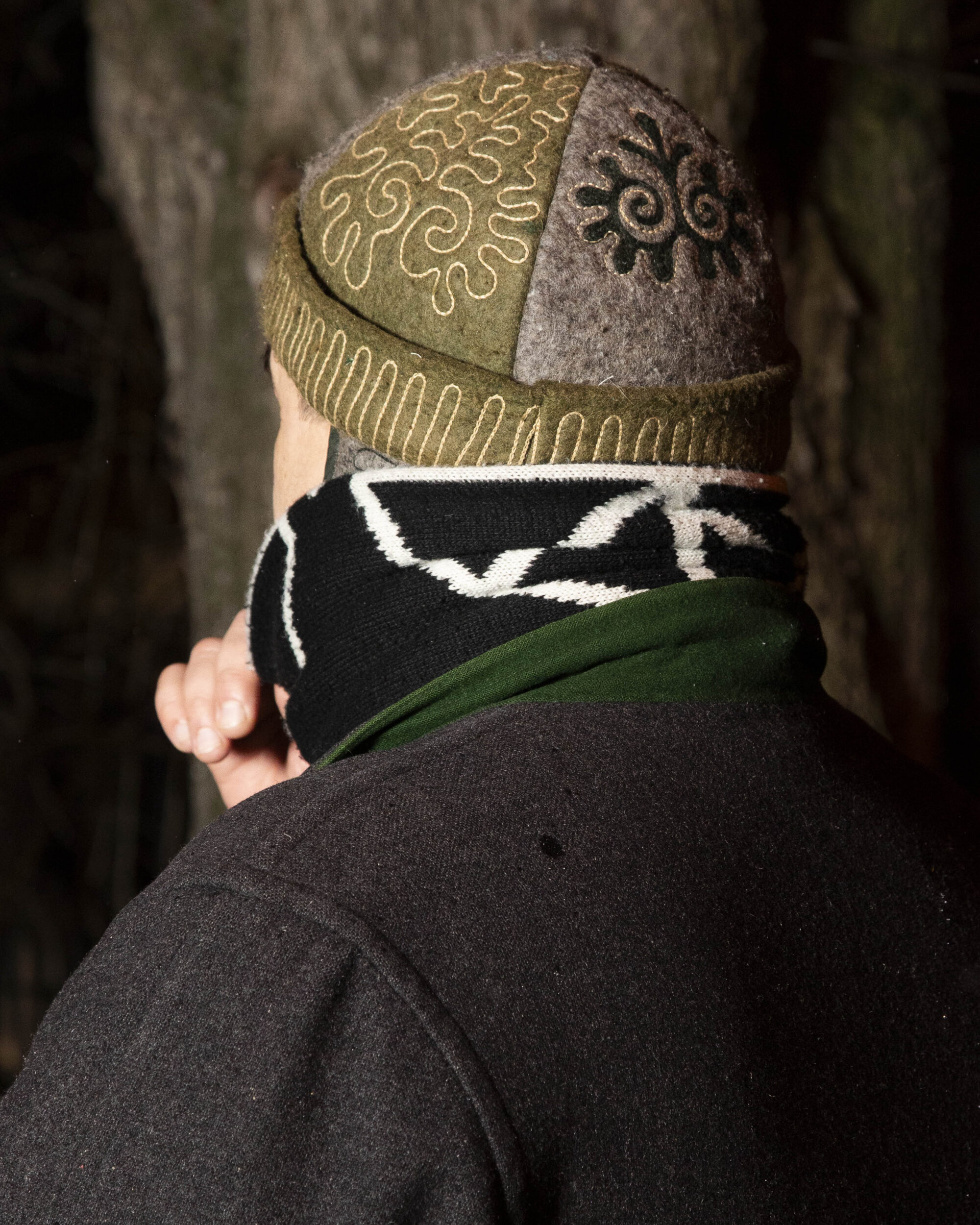
How do you respond to institutions that appropriate decolonial, political, and emancipatory discourse?
I would start with myself, because my own politics could definitely be better. Maybe it’s time to reconsider what being political actually means—like, when I post something on social media, am I actually addressing the issue, or just signalling to my bubble and generating revenue for tech billionaires? Stuff like that, for starters.
These days, It feels like I finally understand what Fred Hampton meant when he said fascism will stop us all, and that we need to fight fire with water before it’s too late. And as a cultural worker who doesn’t have to spend nights in bomb shelters or refugee camps, I feel a personal responsibility to at least try to render the world in its full complexity—not as a simplified comic book universe where everyone is either a villain or a victim. Of course, there are situations where things are obviously simple—say, I will never team up with fascists or anyone who thinks genocide is a lesser evil. But honestly, how many people in these institutions actually believe that? I know a few rather shady characters, but they definitely don’t represent the majority. The rest seem confused—and rightly so. People are out of context, just being afraid of saying something wrong and getting slammed for it, so they cling to hashtags and identity politics jargon just to have something to hold onto.
It’s frustrating, but maybe it’s also time to move past the frustration and focus on tactics instead. Personally, I want to bring class back into the conversation, as the category most conveniently left out by those who build the pyramids of privilege. Another endless source of questionable fun is pointing out the contradictions in this comic book universe. One of my favorites: how far are you really willing to go when you talk about decolonizing a museum? Say, an ethnographic museum? Go on, stay coherent, stay on track, and there’s no museum left. If that’s what you want, I can only applaud. If not, then let’s talk about what it means to include other voices in the decision-making process—not just represent them so you can turn these brief encounters into cultural currency and use it to signal your awareness.
What is your relationship with music technology, being a computer musician? What is your relationship with quray, and what has your trajectory with it been like?
Both relationships are evolving, but at different stages: I feel very confident with most synthesizers and algorithms, while with quray, we’ve just moved past the honeymoon phase, so it’s only starting to get serious.
Over the past few years, I’ve been transforming my setup into a proper ecosystem centered around this “aural uncanny valley” thingy I mentioned earlier. It was missing an actual acoustic instrument that would fit into that setup, so eventually, I chose quray. There was a lot of hesitation, questioning whether I was even worthy of playing it—because it’s more than an instrument, but an essential part of Bashqort culture and identity, traditionally made from an endemic plant of the same name, so it’s deeply connected to the land. It’s also difficult to play. Even making your very first sound is a challenge, and the learning curve definitely falls into the “hard to learn, impossible to master” category. Also, the way I play it is, to say the least, very noncanonical—mostly inspired by free improvisation techniques from artists like Werner Durand and our local hero Marina Tantanozi. I’ve received comments from traditional musicians, some of them rather negative, because to their ears, what I do sounds like noise. I respect that feedback and understand where it comes from. But again, my cultural experience is secondhand, and compared to them, I never had the chance to study the instrument with a true master, a quraysı, only with fellow amateurs like myself. Still, people like me exist, so our ways of playing exist too.
From other perspectives, quray is the perfect match. It’s very affordable, even though you can’t buy one in Europe, so I always have to ask friends to bring them over. I don’t have the traditional ones made from plants, only the modern versions crafted from veneer, which makes me want to experiment with local Swiss plants and perhaps try 3D printing. It’s very lightweight and compact, which is perfect for a touring musician like myself. It’s also infinitely rich in overtones—when pushed to its limits, it can get really noisy, which works beautifully with the computer music techniques I use, especially resynthesis, where more noise means more frequencies to work with.
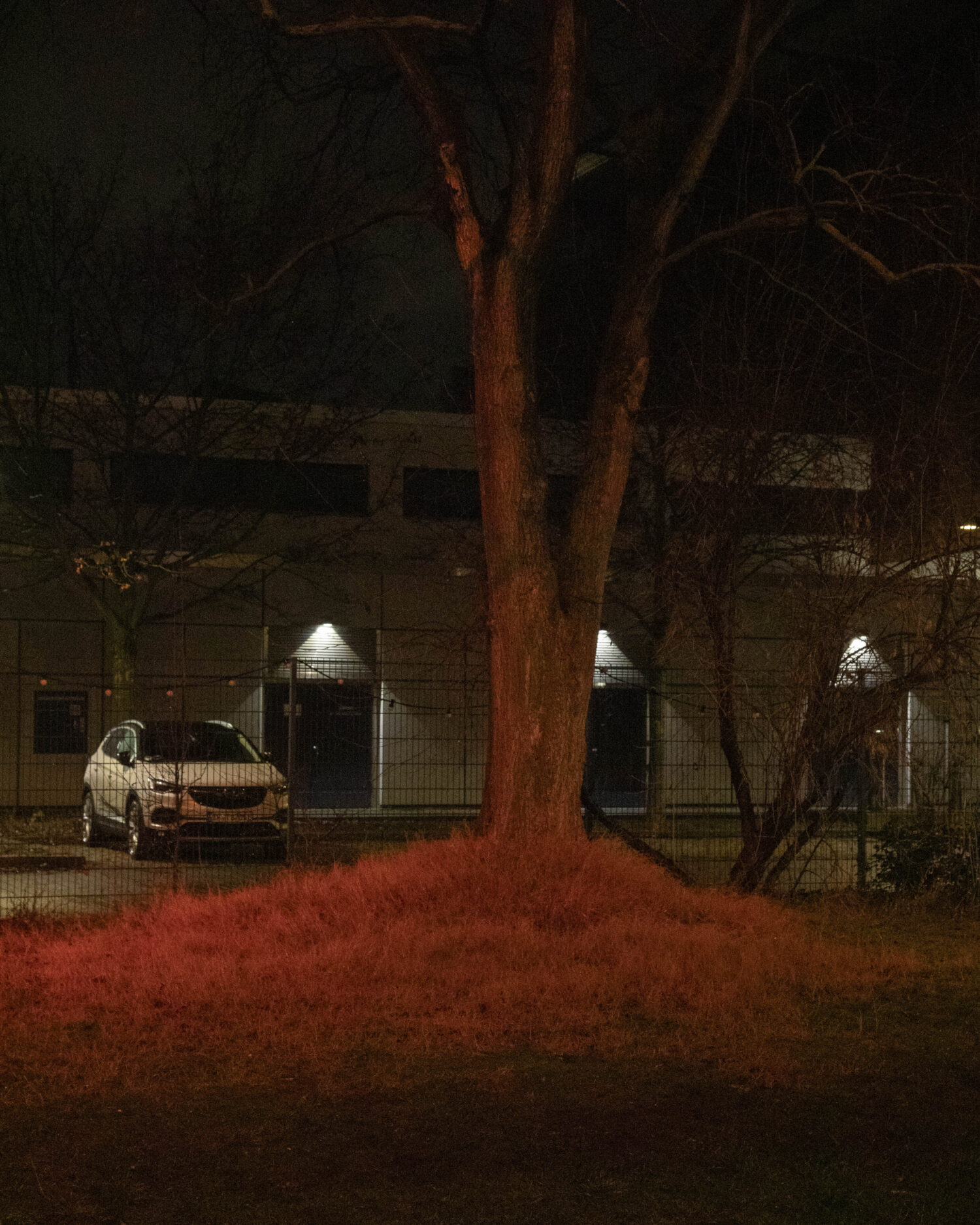
You curated the CTM call for Resynthesising the Traditional. Could you share more about this experience and the process behind it? Also interested in the concept of self-exoticisation and how you manage to navigate this in your practice.
Kudos to Taïca Replansky and Jan Rohlf, the project’s co-curators and two of the brilliant minds behind CTM, as none of this would have been possible without their involvement. What evolved into the idea of a lab started as a thought experiment, with the three of us trying to figure out how to engage with what is called musical tradition without falling into the traps of capitalism, nationalism, and exoticisation. It then naturally transformed into a lab, not just to add a practical layer but to create a curated platform for practitioners working in the same field who wanted to contribute. This January, we held the first edition of the lab with eight participants, each bringing their own practice, co-hosted by me and Susie Ibarra, who also brought her very unique perspective. Since then, the project has continued to evolve. Taïca is now editing a series of publications for CTM Magazine, which I highly recommend reading, and more events, projects, and open calls are in the works.
As for self-exotisation, to me this word belongs in the same category as “Indigenous” or using “decolonize” in relation to abstract concepts. What I mean is that they are thrown in conversations outside the communities they’re supposed to be about, either to categorize or, in the case of self-exoticisation, to control. And it’s a zero-sum game. On one side, you have those demanding the “most authentic” representation, unaware of the history and politics behind tradition. On the other, you have those with critical tools who blame the “commoners” for not being enlightened enough, instead of practicing empathy. Artists are caught in the middle, restricted by policies on how they should define and express themselves, and judged by outsiders with little understanding of the culture. Speaking of epistemic violence, or even epistemicide, this is a perfect example. People often forget that for some cultures, especially those being erased even as someone is reading this, even a wonky representation can be existential—at least as a way to show the world they still exist.
Do you identify as an immigrant? How do you feel your cultural and regional background, as well as your diaspora experience, influence your position in the music scene, your career trajectory, and your access to social, emotional, material resources? What are the advantages this position gives you?
I do, but I like to think it matters less in a country like Switzerland, where there is no universal national identity or even a standard capital city. Especially in places like Basel, where about a third of the official residents are immigrants, and nearly every local person I know has some connection to a diaspora. This is one of the reasons I really like this place and feel at home here. I definitely bring a unique perspective, but so do many others. And I’d prefer people engage with my work for its artistic value and vision, not just my cultural or ethnic background. Even though in today’s attention economy it’s probably a mix of both.
There Will Come Gentle Rain sounds like an invocation. What is this gentle rain it summons? What kind of effect would you like it to have?
I never had a clear idea, but hopefully, it comes to make us all soft and lovely.
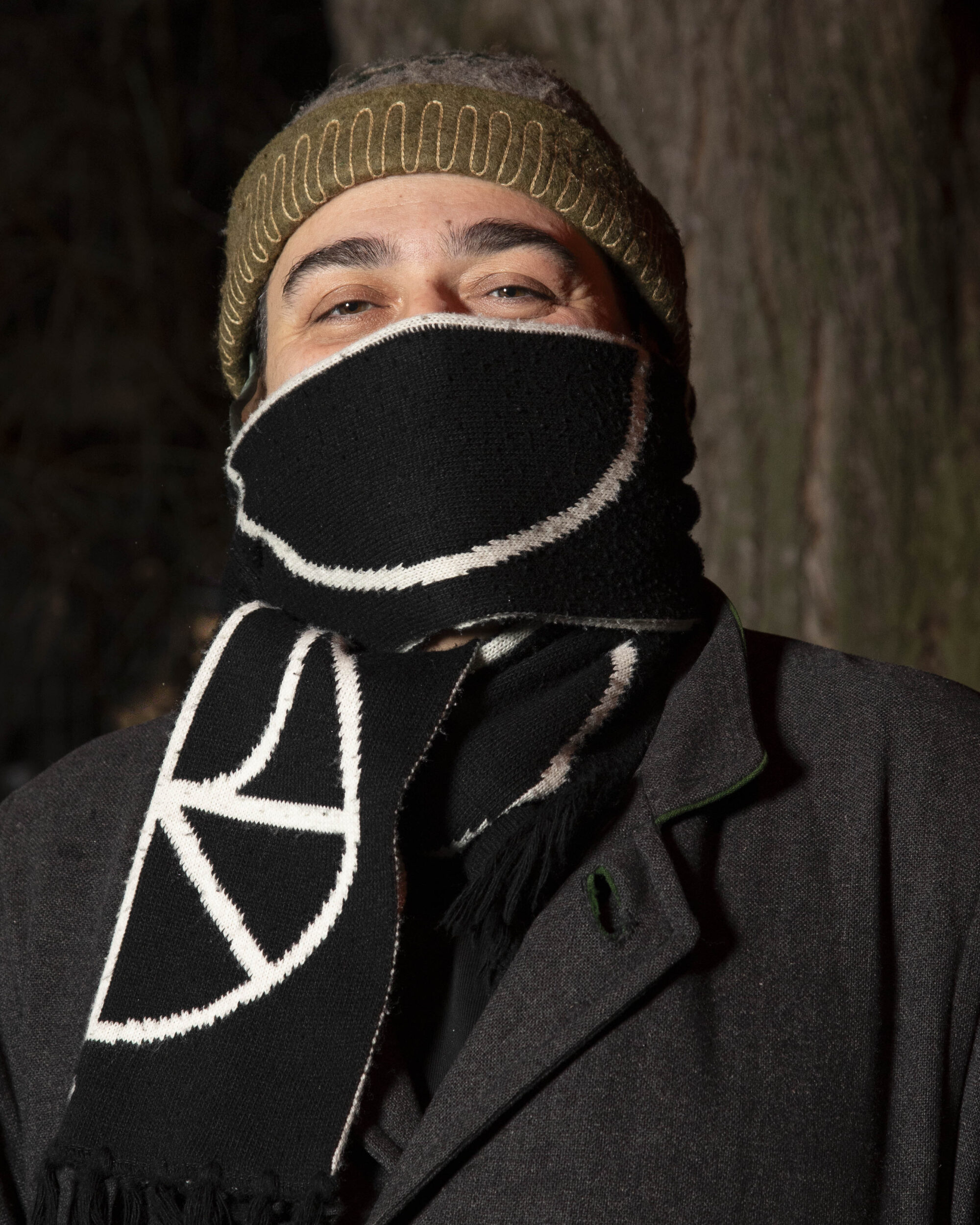
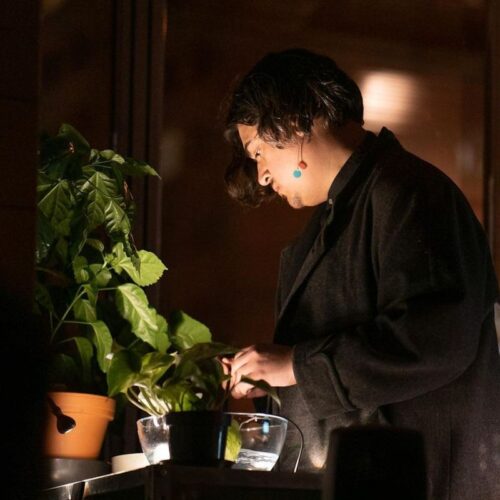
Hmot

This article is brought to you by Struma+Iodine as part of the EM GUIDE project – an initiative dedicated to empowering independent music magazines and strengthen the underground music scene in Europe. Read more about the project at emgui.de
Funded by the European Union. Views and opinions expressed are however those of the author(s) only and do not necessarily reflect those of the European Union or the European Education and Culture Executive Agency (EACEA). Neither the European Union nor EACEA can be held responsible for them.